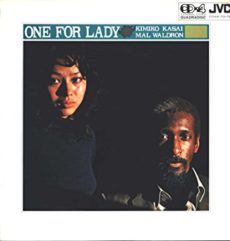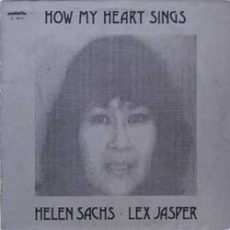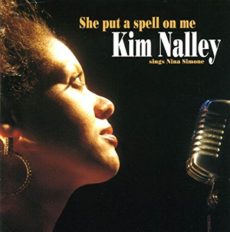
Requisites
Lambert, Hendricks & Ross were a vocalese trio formed by jazz vocalists Dave Lambert, Jon Hendricks and Annie Ross. This was their fourth album of the six they would record before Annie Ross left the group.
The Hottest New Group In Jazz is a 1960 album for the CBS record label and consists of ten compositions recorded: Charleston Alley, Moanin’, Twisted, Bijou, Cloudburst, Centerpiece, Give Me That Wine, Sermonette, Summertime and Everybody’s Boppin’.
The cover photo was taken by Vernon Smith.
More Posts: collectible,vocal

Daily Dose Of Jazz…
Dardanelle was born Marcia Marie Mullen on December 27, 1917 in Avalon, Massachusetts and chose her stage name early in her career. Starting her musical career in the 1930s, she led her own trio with guitarist Tal Farlow and bassist Paul Edenfieldin the mid-1940s. They appeared in the Copa Lounge at the Copacabana nightclub in New York City. Their repertoire included jazz standards, hot numbers, blues titles and some original compositions, novelty songs.
In addition to piano, Dardanelle sang and recorded for Victor in 1946. In 1951 she recorded for Columbia Records, but like many of her colleagues, she focused more on her family and disappeared from the music business until the Sixties. By then she began working for radio and television stations as a musician and actress. Outside Chicago, Illinois she had her own show featuring her sons Skip (a drummer) and Brian as a musician. From 1966 to 1984 she lived in Glen Rock, New York and had a comeback as a jazz singer in the late Seventies. It appeared on Stash ‘s two albums Songs for New Lovers and The Colors of My Life , in which Dardanelle toured with her trio, Bucky Pizzarelli, George Duvivier and Grady Tate.
Dardanelle performed and recorded through the Eighties on the Audiophile label with guest appearance by Slam Stewart. on her album New York, New York – Sounds of the Apple which was nominated for the Grammy. A move to Oxford, Mississippi, in 1986 she was a lecturer in Artist in Residence at the University of Mississippi.
Her last public appearance was in 1997 in Greenwood, Massachusetts Jazz and blues and singer, vibist and pianist Dardanelle passed away on August 8, 1997 in Memphis, Tennessee due to complications of a heart valve operation at the age of 79.

Requisites
One For Lady was a 1977 recording session led by vocalist Kimiko Kasai, with pianist Mal Waldron, bassist Yoshio Suzuki and drummer Hiroshi Murakami . It was released the following year originally on the Catalyst International label out of Japan.
The albums consists of the eight recognizable and memorable compositions: Don’t Explain, My Man, Some Other Day, Willow Weep For Me, Yesterdays, Lover Man, You’re My Thrill and Left Alone.
The album design is by Keijiro Kubota, photography by Takashi Arihara, the producer/recording director was Tetsuya Shimoda and the recording engineer was Hideo Takada
More Posts: collectible,vocal

Daily Dose Of Jazz…
Helen Sachs was born December 17, 1934 in Indonesia and began taking classical piano lessons at the age of six. During her school days, she appeared as a vocalist with her own jazz trio. Her idols were the jazz singers of the 1940s like Billie Holiday, Ella Fitzgerald and Sarah Vaughan, as well as Frank Sinatra and Mel Tormé.
In 1957 Helen moved to Germany and from 1969 she began to perform with small combos and big bands. She worked with various radio and television stations in Europe, including TROS and VARA in the Netherlands, Südwestfunk and Süddeutscher Rundfunk and TV Bratislava.
She made recordings with Mel Lewis and Jeff Hamilton, and appeared with Hank Jones, Art Farmer and Toots Thielemans. She taught from 1973 to 1988 at the University of Duisburg, and in 1997 she moved to the United States.
She works with her septet Crossings and the Big Band On The Rio Grande in Las Cruces, New Mexico. Since then vocalist Helen Sachs has frequently performed in Germany, and with her quintet and the Ralf Butscher Trio together with Curt Warren.
More Posts: vocal

Daily Dose Of Jazz…
Kim Rene Nalley was born November 14, 1971 in San Francisco, California but was raised in New Haven, Connecticut in a musical family that includes jazz drummer and photographer Reggie Jackson and R&B guitarist-vocalist Earl Whitaker. She received piano lessons from her great-grandmother and originally pursued classical voice, studying drama and opera at the Educational Center for the Arts in New Haven. She went on to study classical music at Holy Cross in Worcester, Massachusetts.
At Holy Cross, Nalley sang with the power rock combo The Limit, which featured Crusader musicians Garrett Scott Flynn, Steve Guerette, Jim Januzzi, Allan Harper and Anthony O’Donnell. Switching to jazz shortly after moving to San Francisco, while attended UC Berkeley, she sang in the Cal Big Band, as well as receiving a See’s Candy’ Scholarship for Outstanding Musicianship.
Kim performed weekly at the Alta Plaza and director Michael Tilson Thomas discovered and recorded her in concert and hired her to sing a program of Gershwin tunes with the San Francisco Symphony. She began performing with the Johnny Nocturne Band for the Rounder/ Bullseye label, went on national and international tours, relocate to Switzerland, but returned to save the club Jazz at Pearl’s from going out of business.
Citing the Little Rascals and Bug Bunny cartoons as her seminal jazz influences, jazz and blues singer, actress, historian and former Jazz at Pearl’s club owner Kim Nalley, known for her powerful 3½ octave range, scatting, r&b, spirituals and folk guitar, continues to perform and record.
More Posts: vocal





